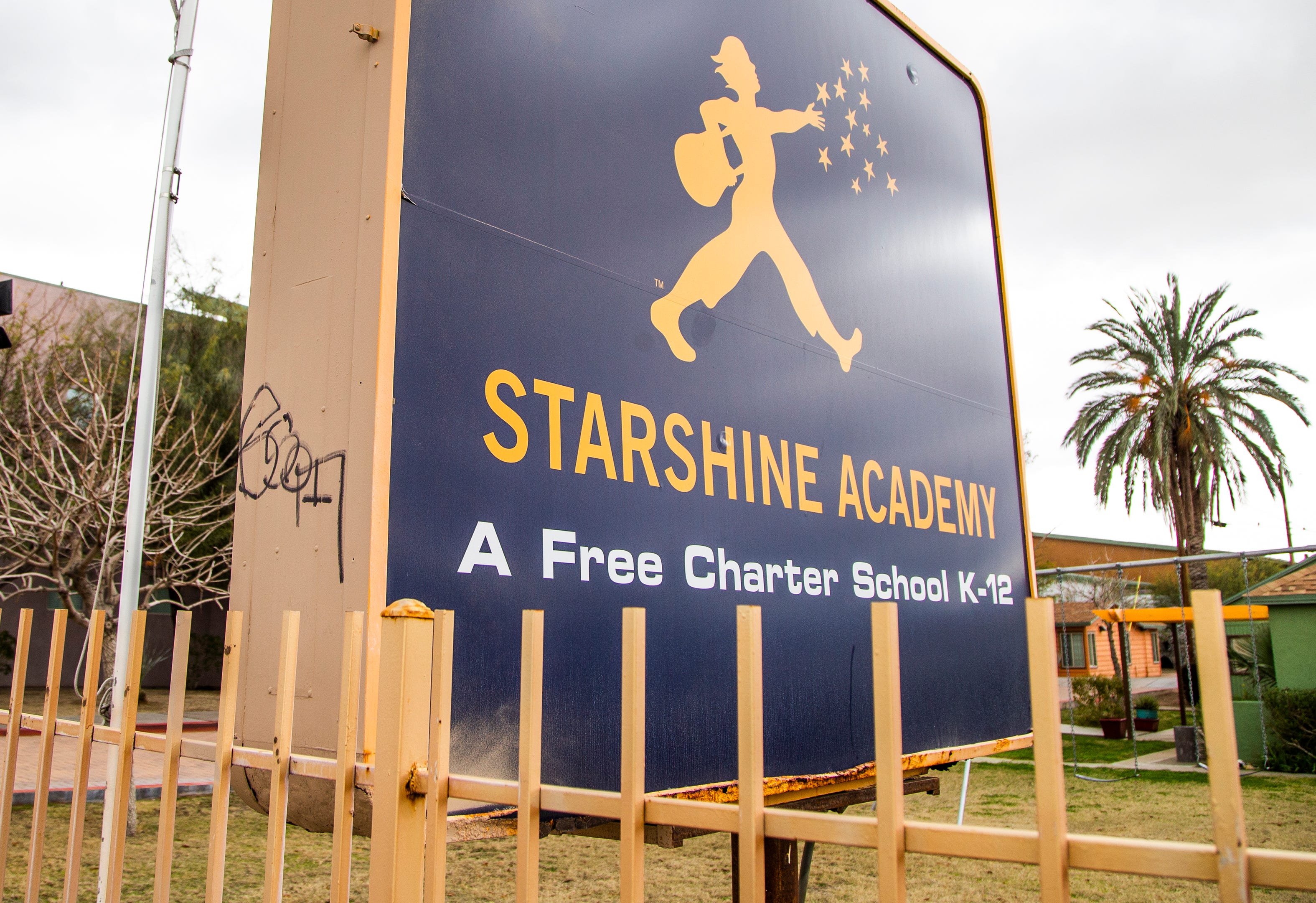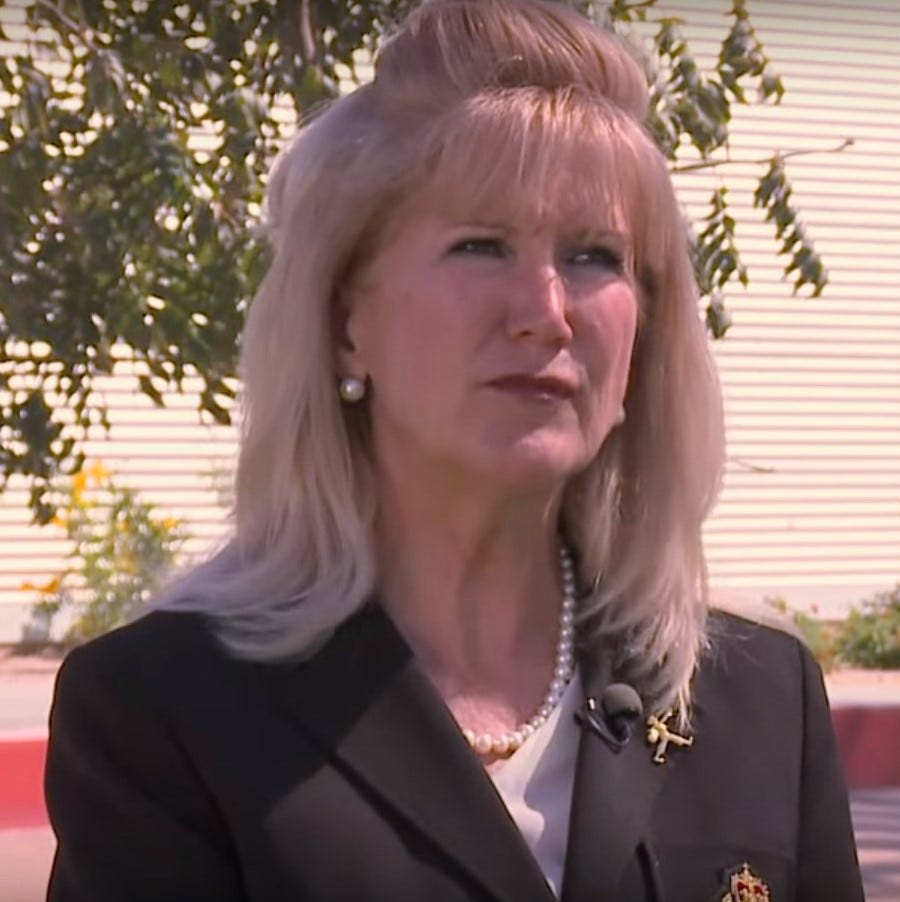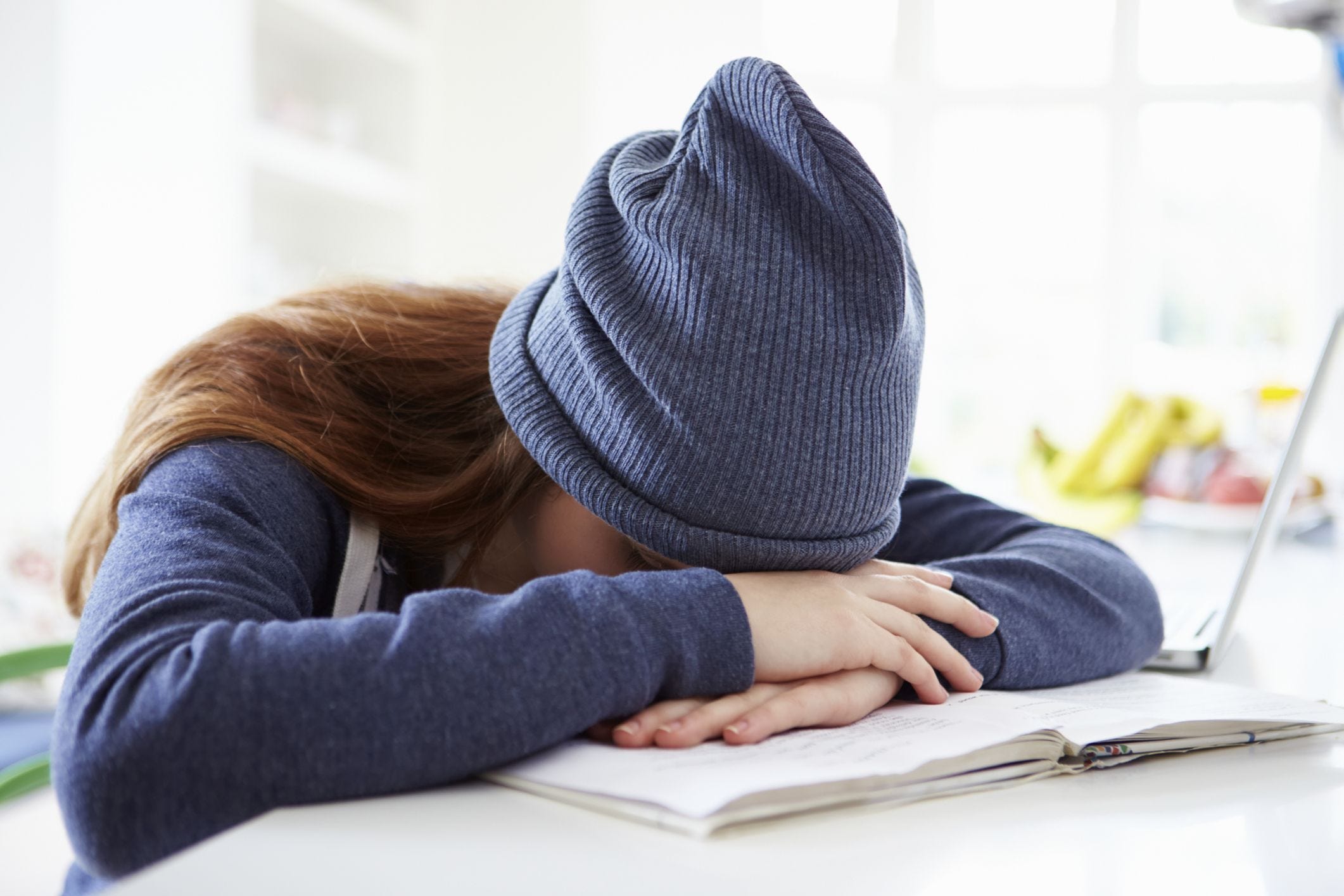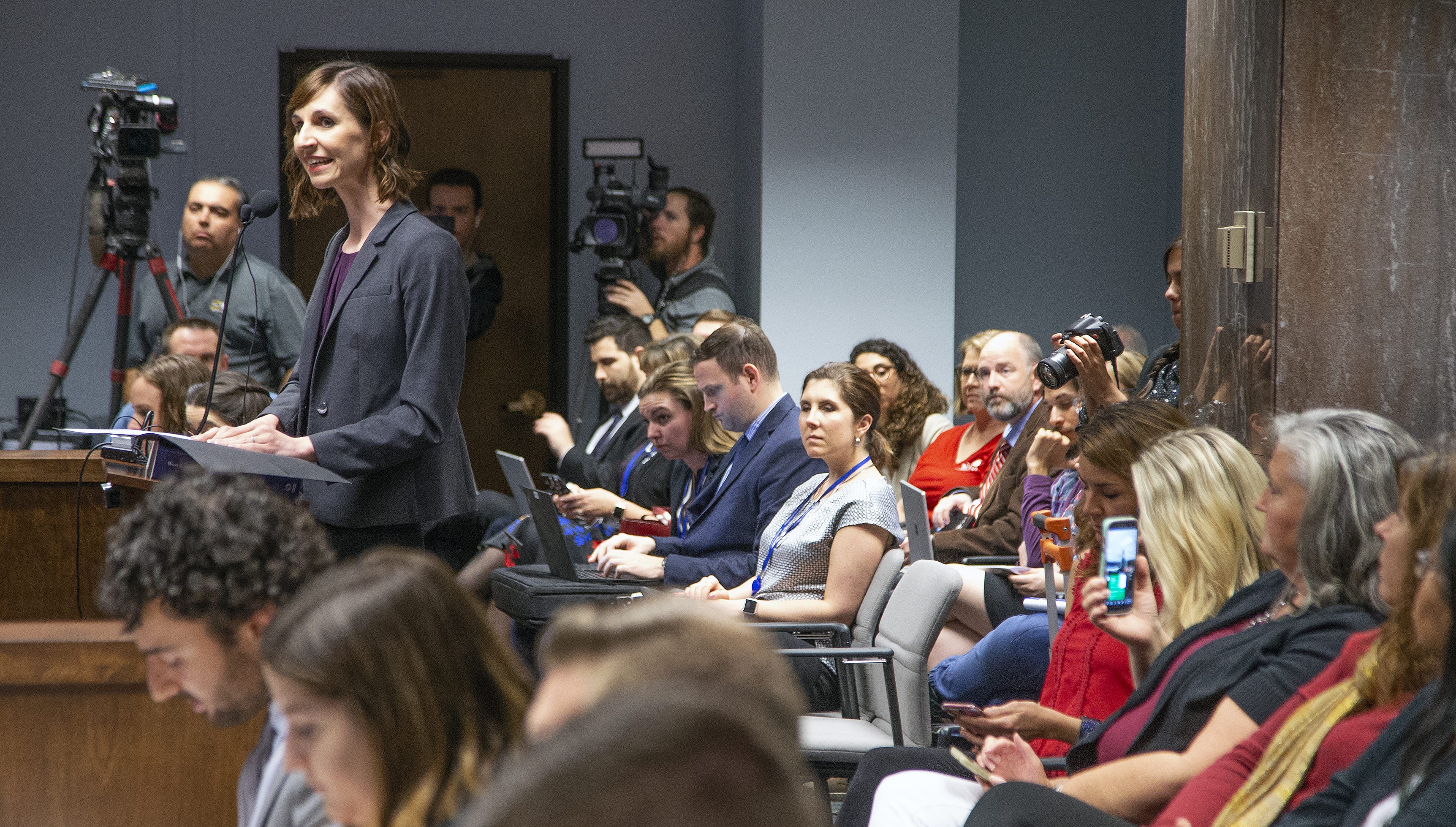William Hollis enrolled his son at StarShine Academy because he hoped the school would offer Matthew more one-on-one attention.
The Phoenix K-12 school’s website advertised itself as a place where students would be prepared for “college, career, life.”
But the reality was different, Hollis said. Matthew got little attention during his middle school years there. He was sometimes handed a tablet as the teacher in the classroom "babysat." He fell behind.
Hollis had no idea that StarShine was one of the state’s more than 100 "alternative" schools, a separate system intended to serve Arizona's most vulnerable students but that instead has allowed poorly performing schools to avoid academic scrutiny.
For years, the state has exempted alternative schools from annual letter grades, the chief measure of academic performance in Arizona, meaning that parents and students are often unaware schools are failing.
The result, according to an Arizona Republic analysis of state Department of Education records, is a system where the state's lowest-performing students end up in schools with the least public accountability and the lowest expectations for progress.
For failing schools, the alternative label can help them avoid closure for poor performance.
That label also allows the schools to misrepresent themselves as an innovative alternative for unconventional students when, in fact, the schools graduate only 28 percent of their students within four years, The Republic analysis shows.
Matthew did not fit the state's definition of an at-risk student before he entered StarShine. But after StarShine, Matthew had fallen behind and become an at-risk student, Hollis said.
“It all started with StarShine,” he said. “That just threw him backwards.”

What is an alternative school?
Alternative schools are both little-known and a significant area of Arizona public education.
Operated mostly by charter school owners, these schools are meant to serve students who struggle or are behind academically, according to the state's definition.
But they increasingly advertise themselves online, on TV, and even on highway billboards as a more flexible charter option for high-performing students.
And the schools are growing. Since 2010, the number of Arizona students enrolled in alternative charter schools has increased by nearly 40 percent, according to The Republic's analysis.
Matthew Hollis will be among at least 30,000 students attending alternative schools in Arizona next school year. Districts operate some of the schools, but charters enroll 86 percent of all alternative school students.
Despite this growth, oversight has remained lax.
The Arizona Department of Education, which regulates alternative schools, can’t accurately verify whether schools that apply for alternative status actually serve at-risk students, The Republic found.
And the agency has enabled failing schools like StarShine to use the alternative label to shield themselves from academic scrutiny, leaving parents in the dark as they decide where to send their children to school.
Everybody talks a big word, but I've still yet to see somebody actually give my son the help that he needs.
For years, schools awarded alternative status have been exempt from the state's annual letter grades, which evaluate district and charter schools based primarily on student performance on state tests. The state will award letter grades to alternative schools this fall for the first time in four years, though the grades will be based on some data that schools self-report.
Responding to questions raised by The Republic's findings, Superintendent of Public Instruction Kathy Hoffman said the state will re-evaluate how it deals with alternative schools.
"I definitely think it is worth exploring what our current practices are and how we identify the eligibility for schools to be alternative schools," Hoffman said. "For me, the primary concern and the primary goal is that we want to hold our students to high standards."
Hollis said he's waiting for a school to fulfill its promise and get Matthew back on track to graduation.
"Everybody talks a big word, but I've still yet to see somebody actually give my son the help that he needs," he said.
Flagging graduation rates
In 2017, just 26 percent of students at alternative charter high schools graduated within four years —compared with 77 percent of students at traditional charters and 88 percent at traditional district schools, according to a Republic analysis of graduation data.
At more than a dozen alternative high schools, graduation rates were in the single digits.
And at a majority of schools that apply for alternative status, graduation rates slip the year after gaining that status, the analysis found.
But measuring the schools’ educational performance is complicated.
Alex Medler, who has studied charter school accountability on a national level for decades, said generally at-risk populations aren’t expected to perform like other kids. But, he said, that expectation leads other schools — both districts and charters — to claim that they’re alternative schools to explain away bad test scores.
Nationally there's little consensus among education leaders of how to set expectations for schools that serve at-risk students, Medler said, and varying definitions from state to state about which students qualify as at-risk.
“The standards of what we should expect of them — or can expect of them — is ill-defined,” he said.
Margaret "Macke" Raymond, director of the Center for Research on Education Outcomes at Stanford University, said enrolling at-risk students shouldn’t exempt schools from meeting basic standards.
“If the excuse is, ‘Our students are too damaged for us to actually deliver high-quality education,’ then they shouldn’t be in the business of trying to deliver high-quality education,” Raymond said.

From time to time, Matthew called his father from school, frustrated that teachers at StarShine Academy weren’t helping him as he struggled through schoolwork.
At one point, Hollis said Matthew told him a teacher sat in the corner of a classroom and cried.
“Nobody was doing anything,” Hollis said. “They weren't trying to upgrade anything ... And everybody was asking, where's all the money that you guys are getting? Where's all this money going?”
Academically, students were far behind the state average: In 2018, 8 percent of the 52 StarShine students tested passed the English Language Arts AzMERIT test while 2 percent passed the math portion. Statewide passages rates averaged 41 percent for both tests.
Alternative school advocates say alternative schools will naturally see lower test scores because they serve at-risk students who are often behind on credits, and thus, behind in academics.
Johnson Bia, president of the Arizona Alternative Education Consortium, said alternative schools should be held academically accountable through student academic growth and college/career readiness.
“A realistic journey for the students is to be progressing and growing,” he said.
Not one of StarShine’s 19 seniors from the school's 2017 cohort graduated in four years, according to the Arizona Department of Education. One in the 2017 cohort graduated in five years. In 2016, two out of the 34 graduated in four years.
The state last awarded a letter grade — a D — to StarShine four years ago for the 2013-2014 school year.
Varying definitions for alt schools
The Arizona Department of Education decides which schools get alternative status, and can reject an application if at-risk enrollment falls short, or if the school fails to meet other criteria.
It requires a least 70 percent of students who attend schools applying for alternative status be “at-risk."
The students have to fall into one of six categories set by the state:
- Students with a documented history of disruptive behavior.
- Students who have dropped out and are returning.
- Students in poor academic standing.
- Students who are financially responsible for another family member.
- Students with a history of legal problems.
- Students who are wards of the state.
Yet the agency has rejected none of the 180 schools that applied over the past three years, even in cases where a school fails to meet enrollment requirements for alternative status.
A Republic review of the state's process found that the agency last year approved the applications of at least 12 schools that enrolled too few at-risk students to be deemed alternative.
One school, South Phoenix Prep and Arts Academy, said in its application last year that 71 percent of its students were at-risk. The state could only verify 33 percent met its definition of at-risk, but it approved the application anyway, according to records obtained by The Republic.
AZ DATA CENTRAL: Search databases on school scores, restaurant grades, more
KJ Weihing, vice president of finance for the non-profit that runs South Phoenix Prep, submitted the school’s application. He said the school uses NWEA, a student-testing tool used across the country, to determine how far behind students are academically.
He said state officials told him the numbers he submitted didn’t match their audit, but that they would approve the application anyway and aim to have a better audit procedure this year.
But Weihing said he wasn’t sure how the state audited his school in the first place when they didn’t have its NWEA data. He said he assumed they used AzMERIT results, which starts at third grade. South Phoenix Prep serves students from kindergarten through fourth grade.
Stefan Swiat, a spokesman with the Arizona Department of Education, confirmed the agency uses AzMERIT data — specifically the number of students scoring minimally proficient on the test — in approving alternative school status.
That measurement is broad, because scoring minimally proficient does not necessarily indicate a student is at risk of dropping out. Last year, more than 300,000 Arizona students scored minimally proficient on the exam's English Language Arts portion, roughly 10 times the number of students enrolled at alternative schools.
Swiat also wrote in an email that the state takes into account about whether a student is receiving special-education services when determining his or her at-risk status. Special education is not listed among the possible criteria on the state's alternative school application website or in its application guidance booklet.
Swiat said the agency has been more lenient in granting alternative status over the past few years due to a change in data systems. The state created a system called AzEDS, meant to standardize the state's data, and started transitioning to that system around 2016.
During that period of leniency, the state approved the applications of 22 schools that had previously been denied alternative status.
Swiat attributed the lapse to a "burnt-out" staff at the agency last spring.
Superintendent Hoffman said she was concerned to hear about that leniency, adding that she'll keep the current round of alternative school applications in check.
Wendy Davy, chief accountability officer with the Department of Education, said the agency is trying to improve its audit process this year. Specifically, she said, the agency is working with schools to make sure officials don't double count kids if they fit into more than one at-risk category.
"But we don't want to just say 'no' based on one criteria," she said.
Davy blamed her predecessors for prior school approvals. She said she started at the agency at the tail end of the alternative school application process last year. The department experienced heavy turnover at the time.
MORE: Charter schools are big business. Who's making money off schools?
Taxpayer money spent in Hawaii
StarShine's problems weren't just academic.
The Arizona State Board for Charter Schools closed StarShine Academy for financial issues last year, after a federal trustee notified the board of suspicious financial transactions by the school’s founder, Trish McCarty.
McCarty used taxpayer dollars meant for StarShine in Hawaii, spending $3,592 at a hotel; $1,600 for her home’s electricity bill; and $500 on a "spiritual healer," according to federal bankruptcy records.

Charles Tack, executive director of the Arizona State Board for Charter Schools, said the board was aware that StarShine’s was struggling financially before last year, but state law at the time prohibited them from taking action.
Kathy Senseman, president of the Charter Board, said StarShine’s case was “one of the most egregious, like outrageous things I've ever read about a charter school.”
State law passed last year has given the board more authority to close financially troubled schools like StarShine. But its authority over alternative schools is still somewhat limited. While the majority of alternative schools are charters, Tack said alternative status issues fall under the Department of Education's jurisdiction.
McCarty did not respond to phone or email requests for comment, but wrote in a letter to the Charter Board last year that the school’s downfall was due to a development deal gone awry in a bid to build a new campus. She also wrote that she failed to properly organize her receipts because she was going through a divorce.
Alternative schools get the same amount of money per student from the state as their traditional district and charter school counterparts.
But alternative charters are often cheaper to operate, said Curt Cardine, a former charter school executive who has become a watchdog with Phoenix-based Grand Canyon Institute. Many operate online, offering speedy “credit recovery” programs for students who need to make up school credits.
According to the Republic analysis, nearly 25 percent of alternative charter expenditures are for administrative salaries, compared with 10 percent at district schools and 21 percent at more traditional charter schools.
At StarShine, 34 percent of the school’s 2017 expenses went to administrative costs, according to financial documents the school submitted to the state.
HAVE A TIP? Become a source for alternative-schools reporting
Holding schools accountable?
The Arizona State Board of Education adopted a model recently to grade alternative schools for the 2018-2019 school year. That means alternative schools will have gone without letter grades, the state’s predominant means of keeping schools academically accountable, for four years — two years longer than all other schools.

So while the number of students at alternative charters has boomed, little information has been available for parents and other education stakeholders to evaluate how well they’ve served the state’s most vulnerable students.
State board documents outline how alternative schools will be assessed starting this fall.
Unlike the grading system for other schools, testing is not as heavily emphasized in the alternative model. Instead, schools will be graded on a list of factors — many of which are self-reported, including the number of credits alternative students earn and whether those credits bring them closer to graduation.
The state will also base 10 percent of the schools' grades on graduation rates, and 10 percent on whether a student continues at a school from one year to the next.
Hoffman said the new grades are a starting point for alternative schools to at least loop them into the accountability system. She said she's open to making changes, but also wants to be realistic about expectations.
Hollis said he wished there was a higher standard of accountability for the schools his son attended. He had hoped StarShine would give his son the kind of attention he needed. Now, he’s glad it has been shuttered.
“StarShine didn’t care about any of these kids,” Hollis said. “It was a total joke and I feel it really hurt him.”
Matthew tried another alternative school, Primavera Online, to try to catch up after StarShine. It didn’t work.
Neither did a recent stint at a district school.
Now 16, Matthew is preparing to start at another alternative charter school in Mesa, as he races to make up credits in hopes of graduating on time.
